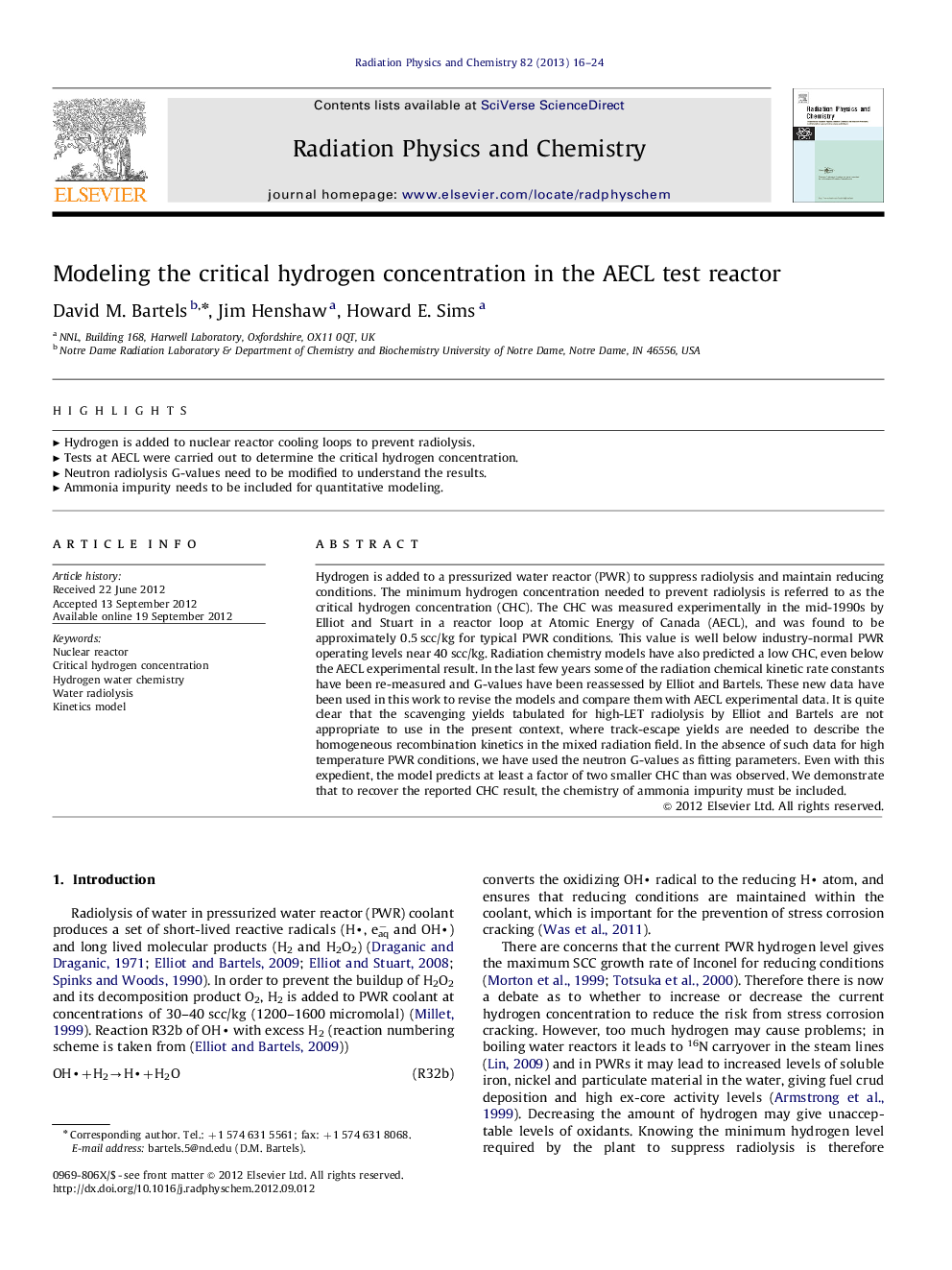| کد مقاله | کد نشریه | سال انتشار | مقاله انگلیسی | نسخه تمام متن |
|---|---|---|---|---|
| 1891518 | 1533542 | 2013 | 9 صفحه PDF | دانلود رایگان |

Hydrogen is added to a pressurized water reactor (PWR) to suppress radiolysis and maintain reducing conditions. The minimum hydrogen concentration needed to prevent radiolysis is referred to as the critical hydrogen concentration (CHC). The CHC was measured experimentally in the mid-1990s by Elliot and Stuart in a reactor loop at Atomic Energy of Canada (AECL), and was found to be approximately 0.5 scc/kg for typical PWR conditions. This value is well below industry-normal PWR operating levels near 40 scc/kg. Radiation chemistry models have also predicted a low CHC, even below the AECL experimental result. In the last few years some of the radiation chemical kinetic rate constants have been re-measured and G-values have been reassessed by Elliot and Bartels. These new data have been used in this work to revise the models and compare them with AECL experimental data. It is quite clear that the scavenging yields tabulated for high-LET radiolysis by Elliot and Bartels are not appropriate to use in the present context, where track-escape yields are needed to describe the homogeneous recombination kinetics in the mixed radiation field. In the absence of such data for high temperature PWR conditions, we have used the neutron G-values as fitting parameters. Even with this expedient, the model predicts at least a factor of two smaller CHC than was observed. We demonstrate that to recover the reported CHC result, the chemistry of ammonia impurity must be included.
► Hydrogen is added to nuclear reactor cooling loops to prevent radiolysis.
► Tests at AECL were carried out to determine the critical hydrogen concentration.
► Neutron radiolysis G-values need to be modified to understand the results.
► Ammonia impurity needs to be included for quantitative modeling.
Journal: Radiation Physics and Chemistry - Volume 82, January 2013, Pages 16–24